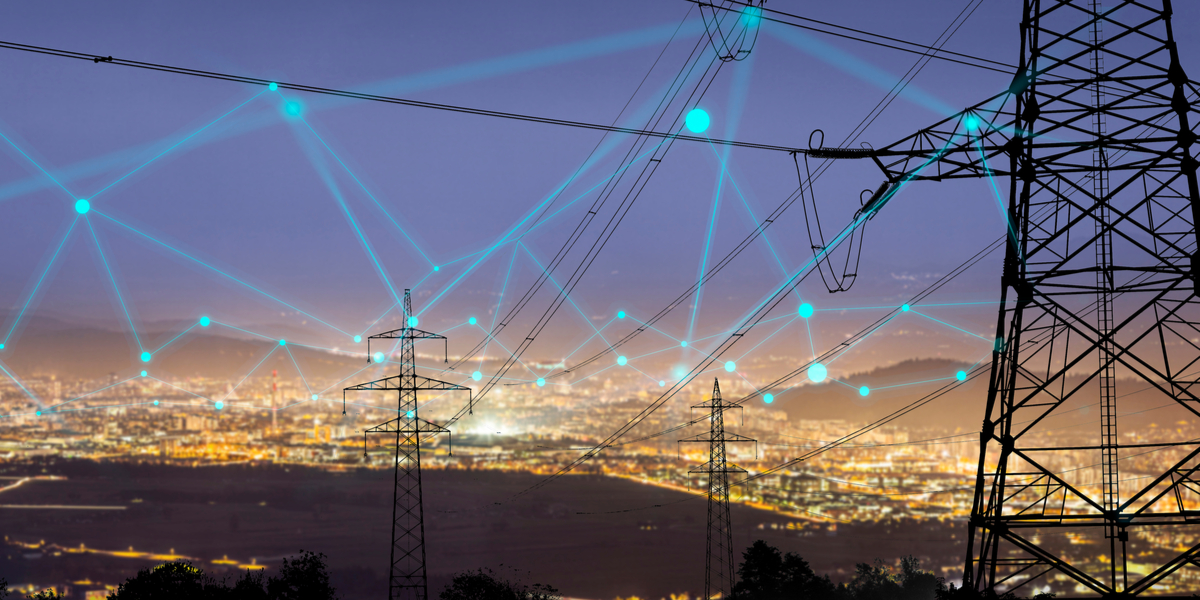Here’s how the infrastructure bill improves the grid
Let's Save Energy
Alliance to Save Energy's Blog
Here’s how the infrastructure bill improves the grid

When the Infrastructure Investment and Jobs Act was signed into law by President Biden earlier this month, it marked the largest investment in U.S. infrastructure in more than a generation. But while previous historic investments such as Franklin D. Roosevelt’s New Deal or Eisenhower’s Federal Aid Highway Act focused on improving the movement of people and goods across the country, one of the undeniable winners of President Biden’s infrastructure package is improving the movement of electrons between our power plants, homes, and businesses with investments in a 21st century grid.
The $1.2 trillion infrastructure bill includes $65 billion for upgrading the electric grid. This is a long overdue investment: the grid, which consists of more than 7,300 power plants, 160,000 miles of high-voltage power lines, and millions of low-voltage power lines, has parts that are more than a century old and was recently given a C- score by the American Society of Civil Engineers. That’s not the post-it-on-the-refrigerator grade you’d expect from the largest economy in the world.
The $65 billion will go toward investments in enhancing grid reliability and resilience, expanding and upgrading transmission lines, improving grid flexibility with demand response and distributed energy resources, and boosting cybersecurity. For American households, these investments should translate into fewer and shorter blackouts, cheaper energy costs, and a cleaner environment.
These are also needed investments for connecting the technologies that are essential for an Active Efficiency future to the grid. Energy efficiency can reduce overall U.S. energy consumption 50% by 2050, and an Active Efficiency approach which incorporates digital technologies, beneficial electrification, distributed energy resources (DERs), and more is likely to increase those savings in consumption. But most of these tools simply can’t reach their potential on a grid predating the invention of the television. Here are a few examples of how grid investments in the infrastructure bill could enable Active Efficiency:
- Integrating distributed energy resources. A DER is an energy resource located on the consumer’s side of the meter, allowing the grid to be more efficient and resilient. For example, a solar-powered microgrid connected to a neighborhood in California will be more efficient for the community by cutting down on transmission losses, while also helping to keep homes powered on even when the threat of a nearby wildfire shuts down main power lines. Funding in the bill helps to prepare the grid for an anticipated influx of these resources, which also include electric vehicles, digital energy devices, battery storage, and more.
- Two-way flow of electricity. Many DERs are capable of sending electricity back into the grid; e.g., an electric vehicle plugged in overnight could send excess charge back to the grid to meet demand elsewhere. Last year’s FERC Order No. 2222 smoothed the pathway for these resources to be compensated for the value they provide – there’s just one problem: in many places, the grid isn’t ready to take on this two-way flow of electricity. The bill calls for smart grid investments to change that.
- Saving energy when it matters most. As a wider variety of resources fuel our power needs, it increasingly matters not just how much energy is used, but when it is used. We need ways to encourage people to use energy when it is abundant and clean and ways to encourage people to save when the supply drops. The infrastructure bill calls for state regulators to look into establishing rate mechanisms that promote demand-response – following the supply rather than the load.
Investments in bringing the U.S. grid into the 21st century will more than payoff. Not only will they help to prevent costly outages or security challenges by bringing systems into good repair, but they will prepare us for the energy system of the future, which we know will be both more connected, integrated, and distributed. Active Efficiency tools that increase efficiency, flexibility, and resilience are our best bet to manage demand in a way that makes energy both cleaner and cheaper in this new era, and the Infrastructure Investment and Jobs Act makes it more readily possible to deploy these tools. The Alliance and its Active Efficiency Collaborative will be working carefully to ensure implementation is swift and widely impactful.
RECENT BLOG POSTS
STAY EMPOWERED
Help the Alliance advocate for policies to use energy more efficiently – supporting job creation, reduced emissions, and lower costs. Contact your member of Congress.
Energy efficiency is smart, nonpartisan, and practical. So are we. Our strength comes from an unparalleled group of Alliance Associates working collaboratively under the Alliance umbrella to pave the way for energy efficiency gains.
The power of efficiency is in your hands. Supporting the Alliance means supporting a vision for using energy more productively to achieve economic growth, a cleaner environment, and greater energy security, affordability, and reliability.



